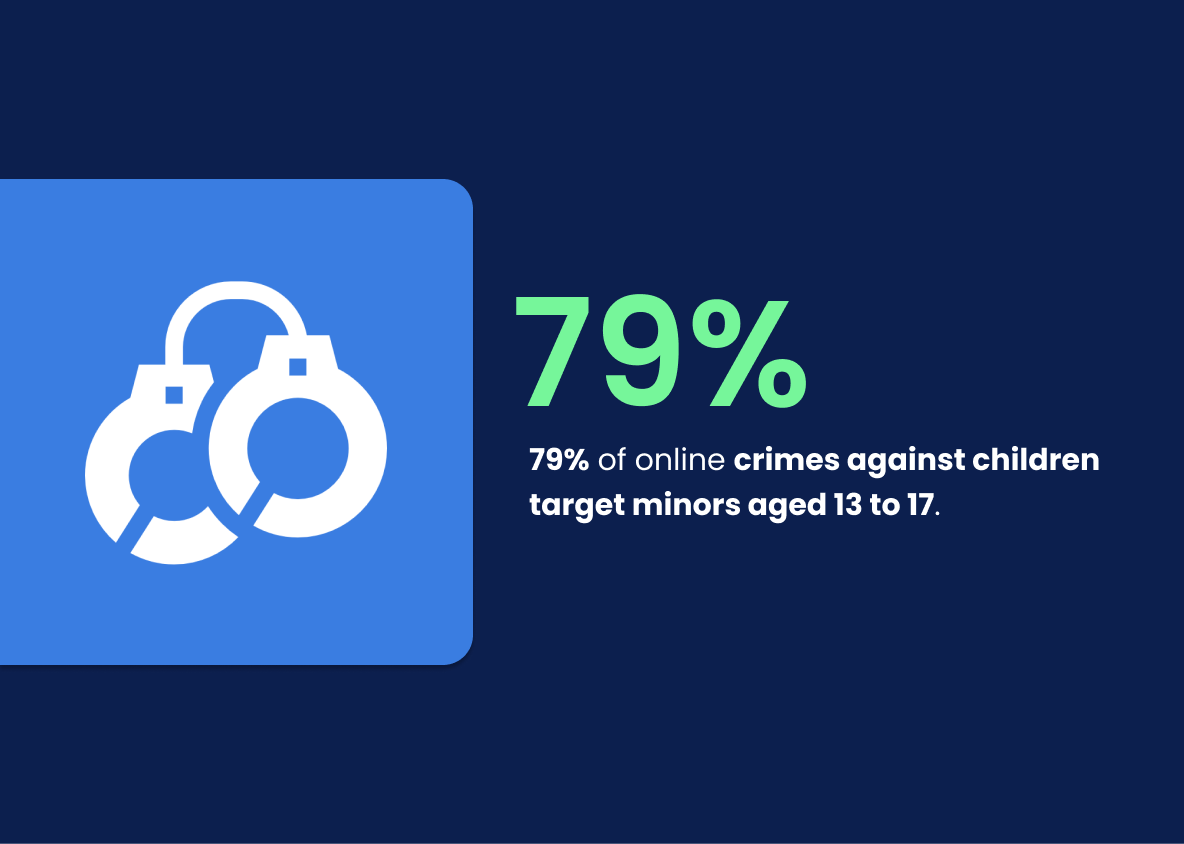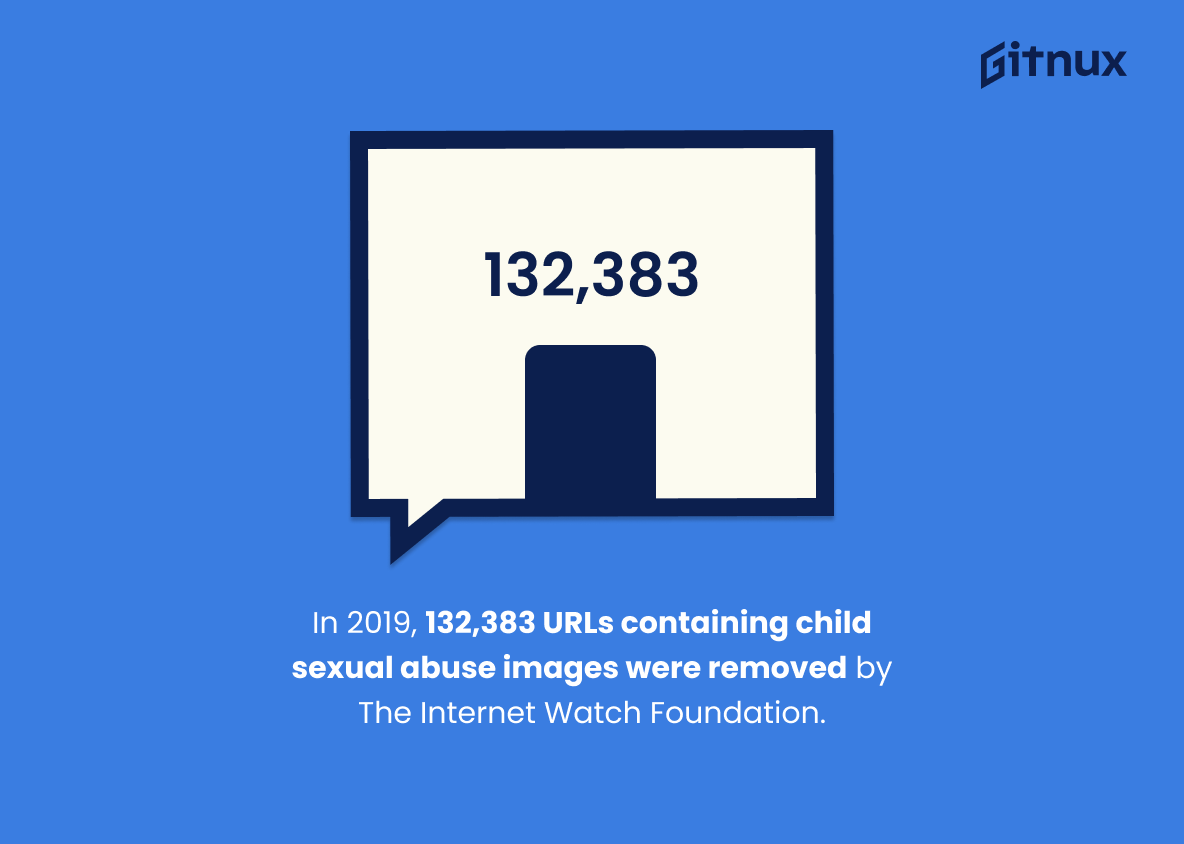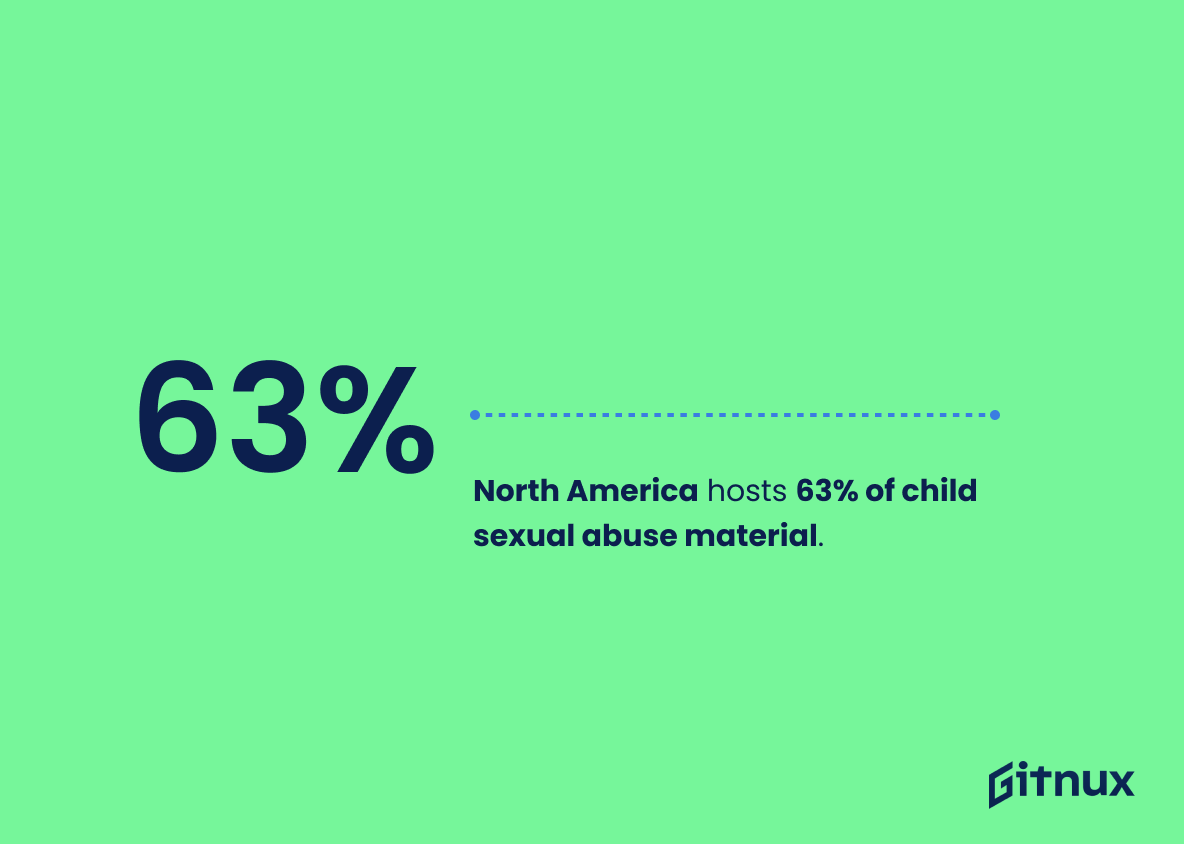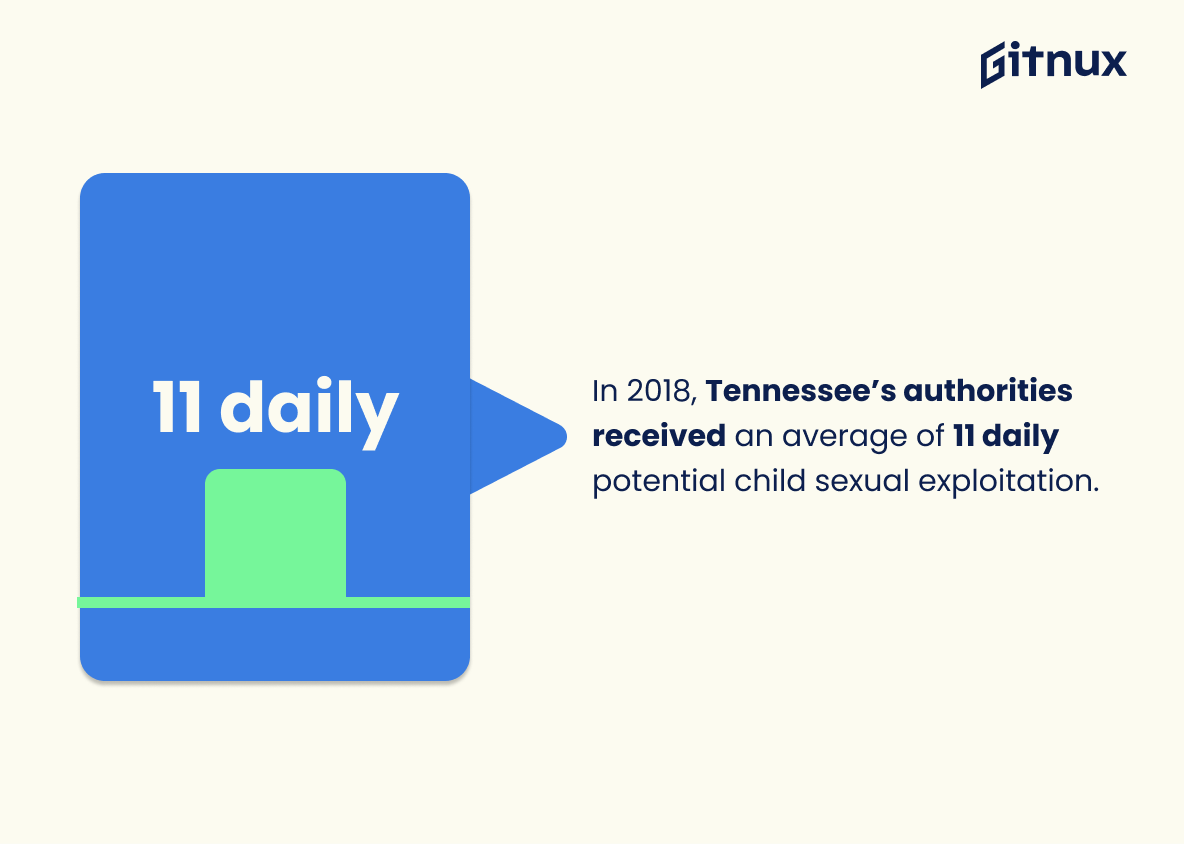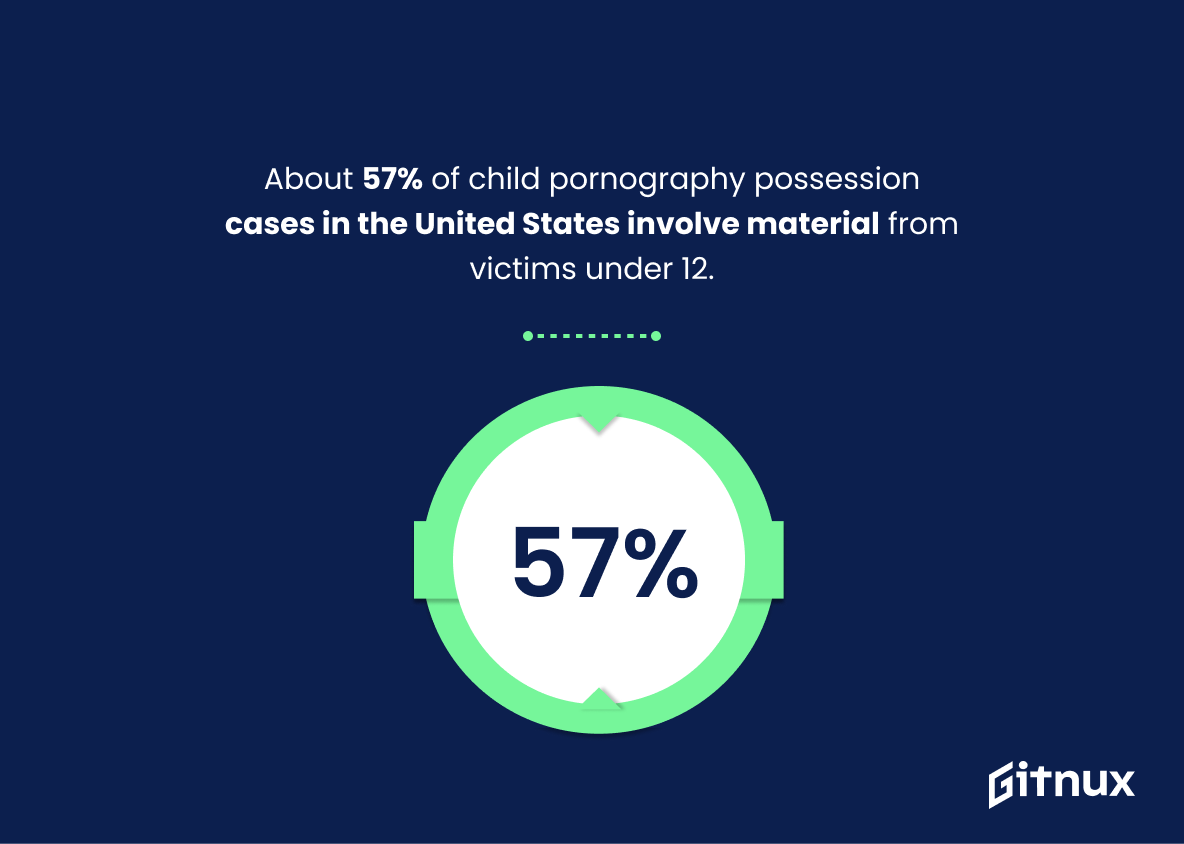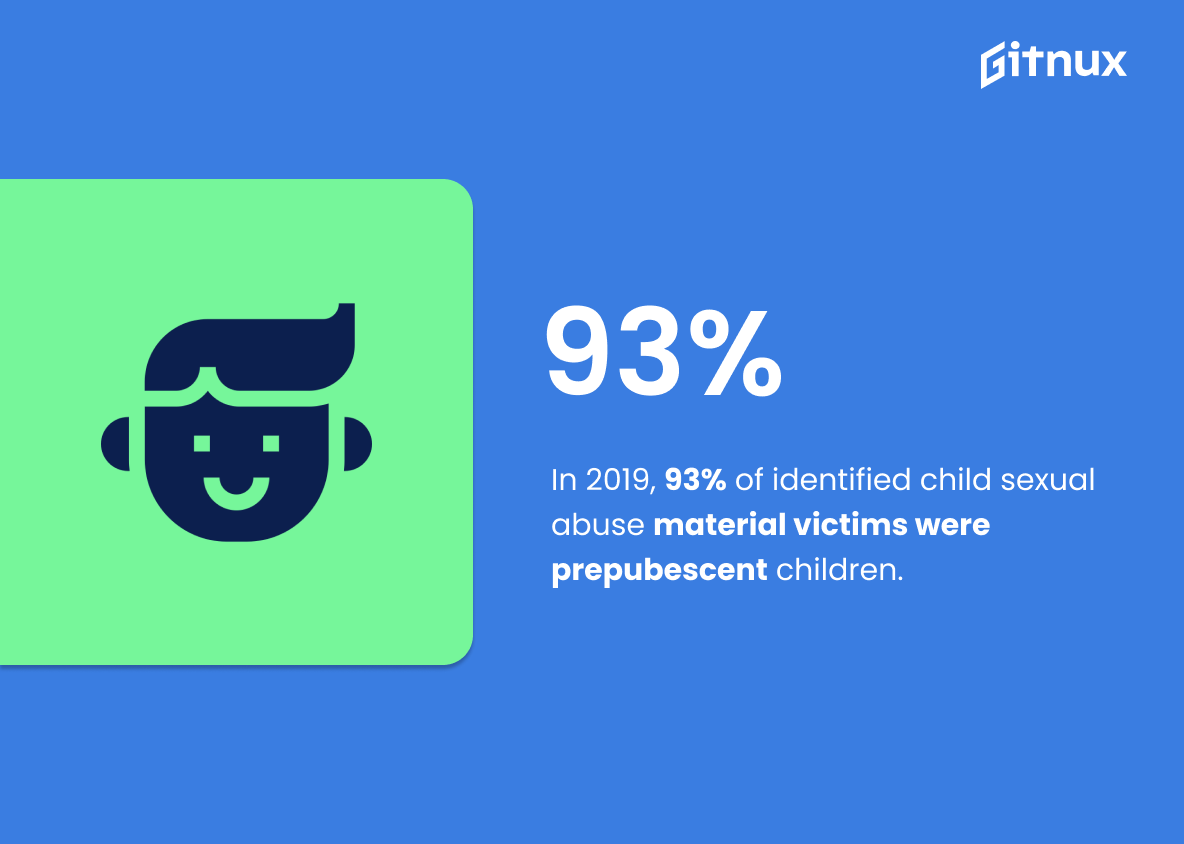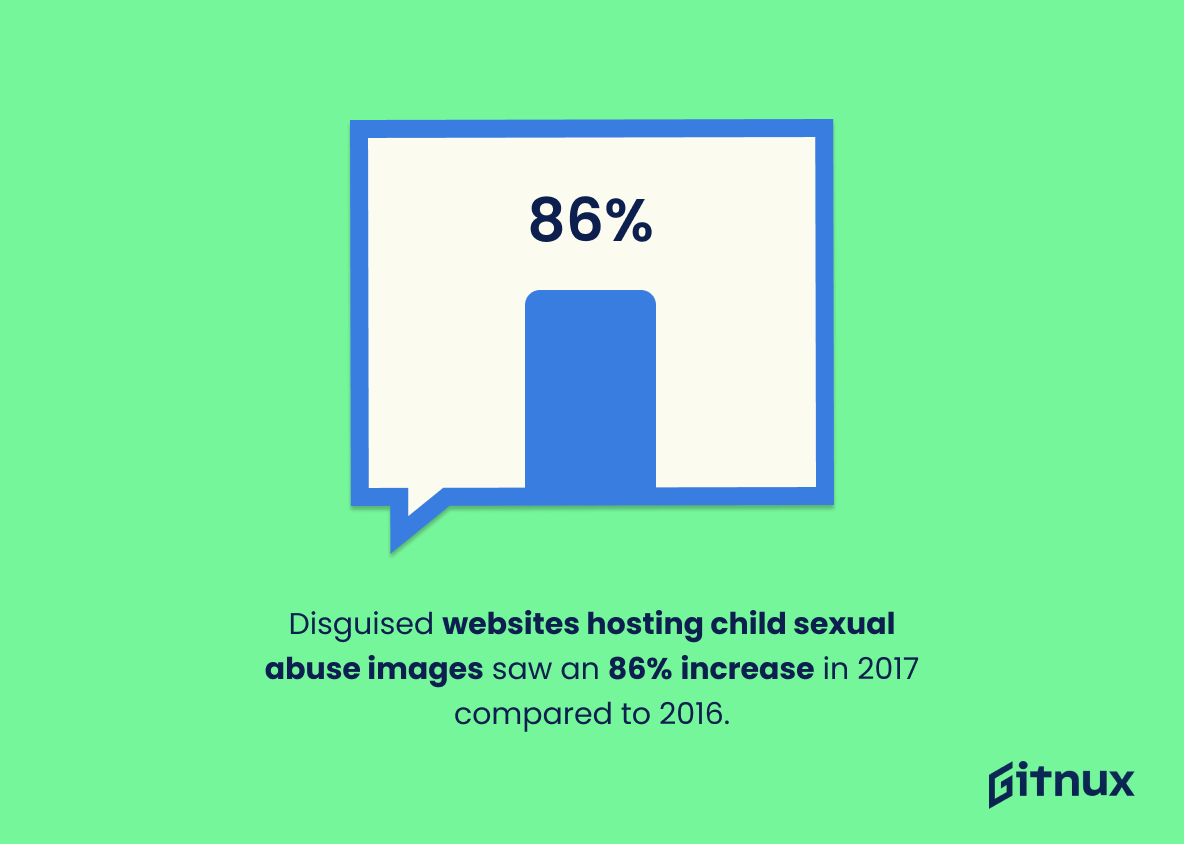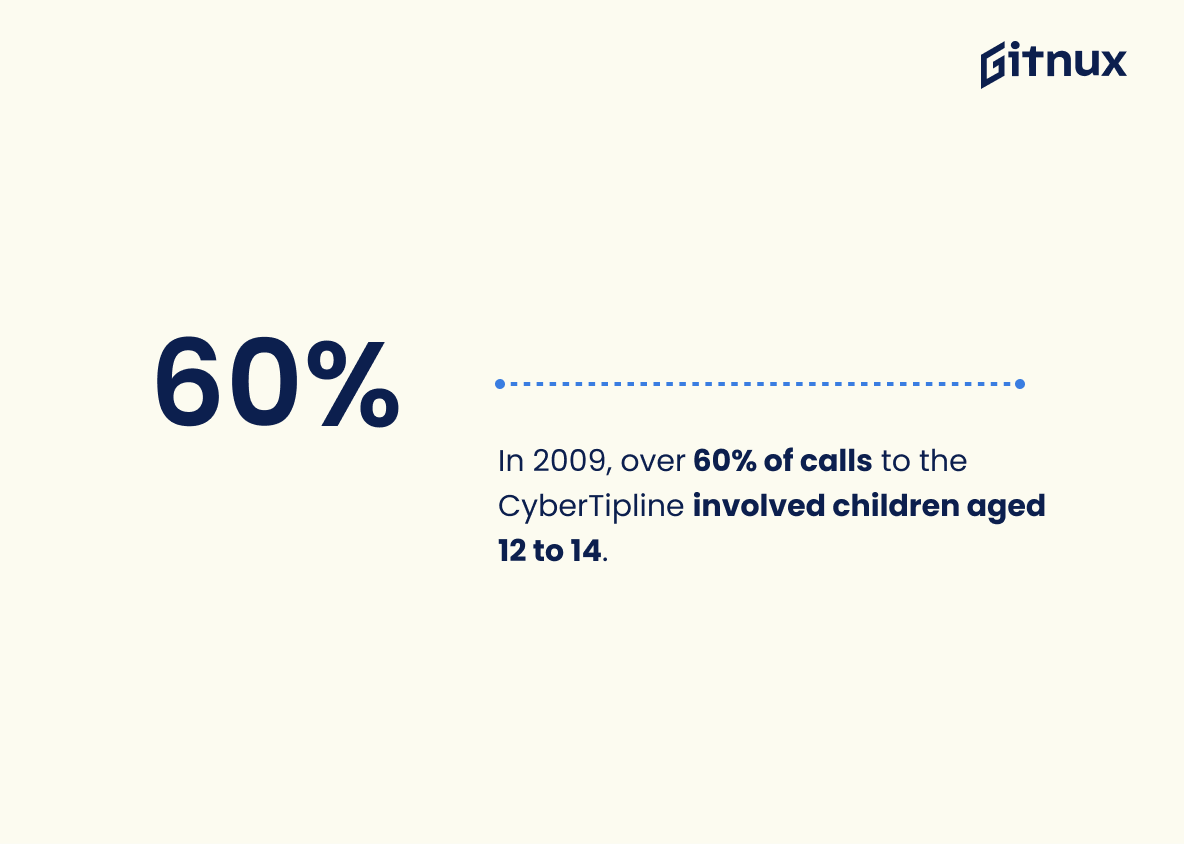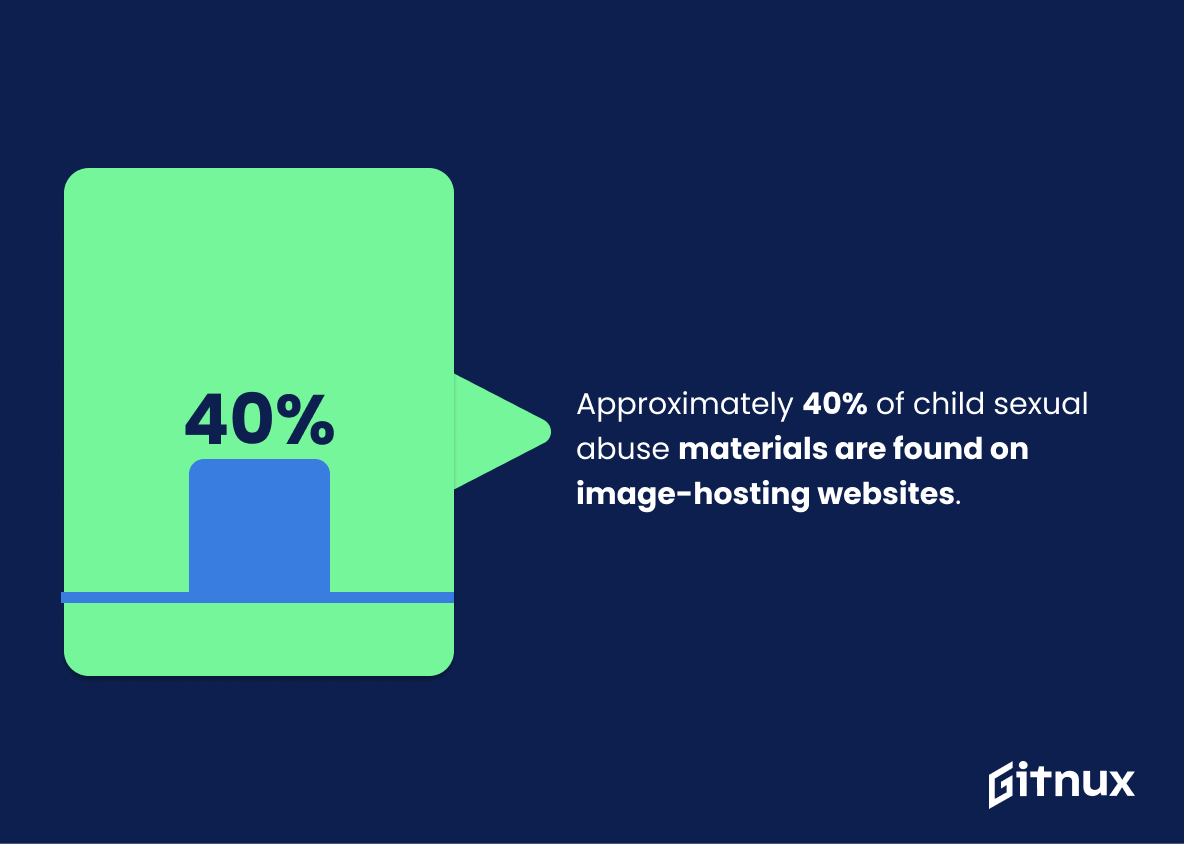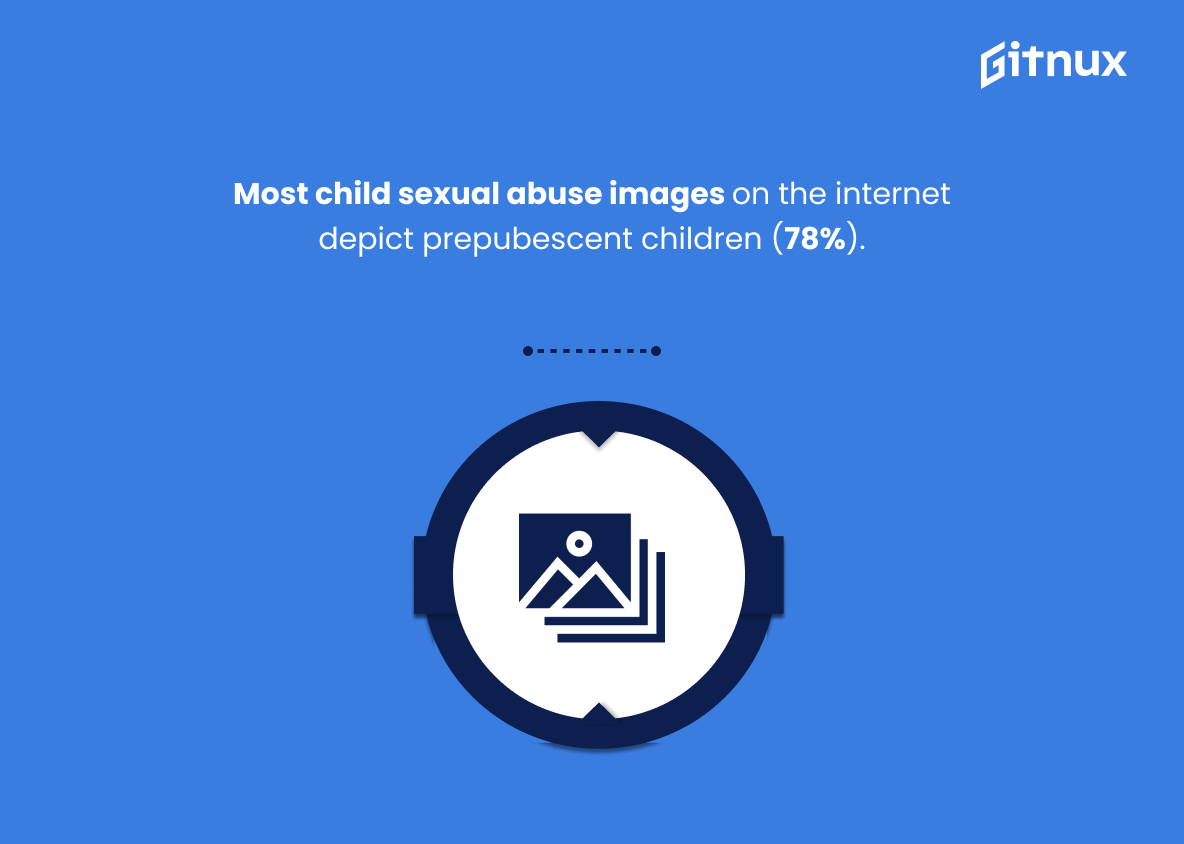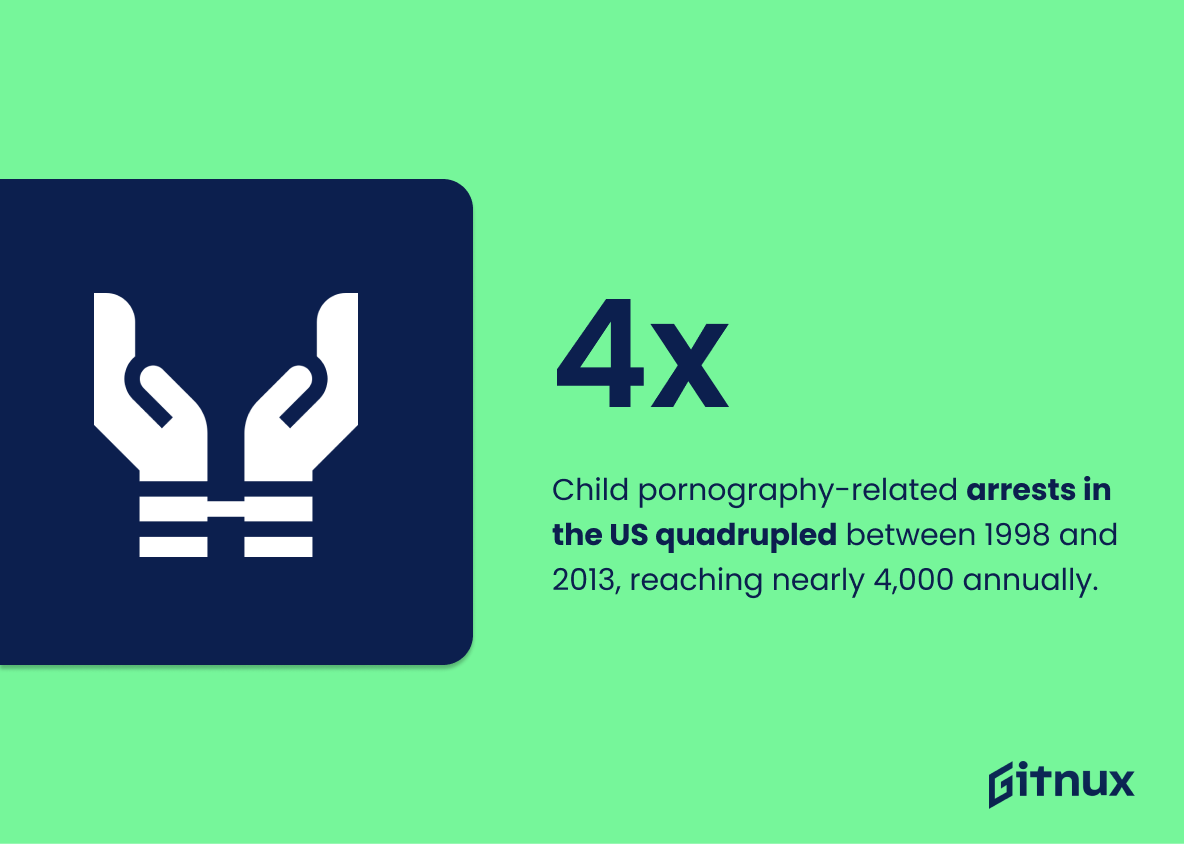The statistics on Internet Crimes Against Children are alarming. In 2019, the Internet Crimes Against Children task forces received over 69,000 reports of child exploitation and The CyberTipline received more than 21.7 million reports related to child sexual exploitation in 2020 alone. Research shows that 1 in 5 girls and 1 in 10 boys will be sexually victimized online before they reach 18 years old, with a 1000% increase since 2015. Additionally, 79% of online crimes against children victimize minors between the ages of 13 and 17 while 63% of child sexual abuse material is hosted in North America according to data from 2019. Furthermore, Tennessee’s Internet Crimes Against Children Task Force reported an average 11 cyber tips per day related to potential child sexual exploitation back 2018; 57% possession cases involve victims under 12 years old; 93 % identified victims were prepubescent children; 96 % contact incidents involved minor who personally knew perpetrator; 46 % offenders were family members or acquaintances ; 86 % images hosted on disguised websites increased between 2016-2017 ; 78 calls analyzed initiated by the child/family ; 541 peer-to-peer networks increased 2008 – 2014 & 78 percent appear pre pubescent . Finally , arrests quadrupled 1998 – 2013 reaching almost 4 000 annually . This blog post aims at exploring these shocking statistics further as well as discussing their implications for society today
This statistic is a stark reminder of the prevalence of Internet Crimes Against Children. It serves as a powerful illustration of the magnitude of the problem and the urgent need for action to protect our children from exploitation online. It is a call to action for all of us to take a stand against these heinous crimes and to ensure that our children are safe from harm.
In 2020, The CyberTipline received more than 21.7 million reports related to child sexual exploitation.
The staggering statistic of 21.7 million reports related to child sexual exploitation in 2020 is a stark reminder of the prevalence of internet crimes against children. It is a call to action for all of us to take a stand against these heinous acts and to ensure that our children are safe online. This statistic serves as a reminder that we must remain vigilant in our efforts to protect our children from the dangers of the internet.
Internet Crimes Against Children Statistics Overview
1 in 5 girls and 1 in 10 boys will be sexually victimized online before they reach 18 years old.
This statistic is a stark reminder of the prevalence of Internet Crimes Against Children. It paints a picture of the reality that many young people face, with 1 in 5 girls and 1 in 10 boys being sexually victimized online before they reach 18 years old. This statistic serves as a call to action, highlighting the need for greater awareness and prevention of these crimes.
There has been a 1000% increase in online enticement of children by sexual predators since 2015.
This statistic is a stark reminder of the alarming rate at which online enticement of children by sexual predators has grown since 2015. It is a clear indication that Internet Crimes Against Children are on the rise and that more needs to be done to protect our children from these predators.
79% of online crimes against children victimize minors between the ages of 13 and 17.
This statistic is a stark reminder of the prevalence of online crimes against children, particularly those between the ages of 13 and 17. It highlights the need for increased awareness and education about the dangers of the internet, as well as the need for increased protection for minors in this age group. It also serves as a call to action for parents, educators, and law enforcement to take steps to protect children from these types of crimes.
In 2019, The Internet Watch Foundation removed 132,383 URLs containing child sexual abuse images.
This statistic is a stark reminder of the prevalence of internet crimes against children. It highlights the sheer number of URLs containing child sexual abuse images that were removed in 2019 alone, demonstrating the magnitude of the problem and the need for continued vigilance in protecting children online.
63% of child sexual abuse material is hosted in North America.
This statistic is a stark reminder of the prevalence of child sexual abuse material hosted in North America. It highlights the need for increased awareness and action to combat this heinous crime. It is a call to action for governments, law enforcement, and the public to take a stand against this type of exploitation and protect our children from harm.
In 2018, Tennessee’s Internet Crimes Against Children Task Force received an average of 11 cyber tips per day related to potential child sexual exploitation.
This statistic serves as a stark reminder of the prevalence of Internet Crimes Against Children. It highlights the fact that, on a daily basis, there are numerous reports of potential child sexual exploitation occurring online. This statistic is a call to action, emphasizing the need for increased awareness and prevention of these crimes.
Approximately 57% of the possession of child pornography cases in the United States involves child sexual abuse material from victims under the age of 12.
This statistic is a stark reminder of the prevalence of child sexual abuse material in the United States. It highlights the need for increased awareness and prevention of Internet Crimes Against Children, as well as the need for more resources to be devoted to prosecuting those who possess and distribute such material. It is a sobering reminder that the exploitation of children is still a major problem in our society, and that more must be done to protect our most vulnerable citizens.
In 2019, 93% of the identified victims of child sexual abuse material were prepubescent children.
This statistic is a stark reminder of the prevalence of child sexual abuse material on the internet. It highlights the need for increased awareness and prevention of these crimes against children, as well as the need for more effective enforcement of laws and regulations to protect children from these heinous acts. It is a call to action for all of us to do our part in protecting our children from these terrible crimes.
The number of images of child sexual abuse hosted on disguised websites increased by 86% between 2016 and 2017.
This statistic is a stark reminder of the alarming rate at which child sexual abuse is proliferating on the internet. It is a clear indication that more needs to be done to protect children from the dangers of the internet and to ensure that perpetrators of such heinous crimes are brought to justice. The increase in the number of images of child sexual abuse hosted on disguised websites is a cause for serious concern and should be addressed with urgency.
In 2009, over 60% of the calls to the CyberTipline involved a child who was at least 12 years old, but not yet 15.
This statistic is a stark reminder of the prevalence of Internet crimes against children, particularly those aged 12-15. It highlights the need for increased awareness and prevention of such crimes, as well as the need for better resources to help protect children from these dangers. It also serves as a reminder that the Internet can be a dangerous place for children, and that parents and guardians should take extra precautions to ensure their safety.
About 40% of child sexual abuse materials are stored on image-hosting websites.
This statistic is a stark reminder of the prevalence of child sexual abuse materials being stored on image-hosting websites. It highlights the need for increased awareness and prevention of these types of internet crimes against children. It also serves as a call to action for law enforcement and other organizations to take steps to combat this issue and protect our children from these heinous acts.
The majority of child sexual abuse images on the internet appear to be of prepubescent children (78%).
This statistic is a stark reminder of the prevalence of child sexual abuse images on the internet. It highlights the need for increased awareness and prevention of these crimes against children, as well as the need for more effective enforcement of laws against those who produce and distribute such images. It also serves as a reminder of the importance of educating children and parents about the dangers of the internet and how to protect themselves from such exploitation.
In the United States, the number of arrests related to child pornography quadrupled between 1998 and 2013, reaching an annual peak of almost 4,000.
This statistic is a stark reminder of the growing prevalence of child pornography in the United States. It highlights the need for increased awareness and prevention of Internet Crimes Against Children, as well as the need for more effective enforcement of existing laws. It is a call to action for all of us to do our part in protecting our children from the dangers of the Internet.
Conclusion
The statistics presented in this blog post demonstrate the alarming prevalence of internet crimes against children. In 2019, The Internet Crimes Against Children task forces received over 69,000 reports of child exploitation and The CyberTipline received more than 21.7 million related to child sexual exploitation. Additionally, 1 in 5 girls and 1 in 10 boys will be sexually victimized online before they reach 18 years old with a 1000% increase since 2015. Furthermore, 79% of online crimes against children victimize minors between the ages of 13 and 17 while 63% is hosted in North America alone according to IWF’s Annual Report 2019.
These numbers are deeply concerning as it shows that not only does this issue affect many young people but also that perpetrators come from all walks of life including family members or acquaintances (46%) or even those under 21 years old (1 out 4). It is clear then that there needs to be greater awareness about these issues so we can protect our youth from such heinous acts committed by predators on the internet who seek to exploit them for their own gain.
References
0. – https://www.www.acf.hhs.gov
1. – https://www.www.nytimes.com
2. – https://www.www.dosomething.org
3. – https://www.www.ncjrs.gov
4. – https://www.www.usatoday.com
5. – https://www.www.unh.edu
6. – https://www.www.missingkids.org
7. – https://www.www.europol.europa.eu
8. – https://www.www.tn.gov
9. – https://www.www.eurekalert.org
10. – https://www.www.iwf.org.uk
